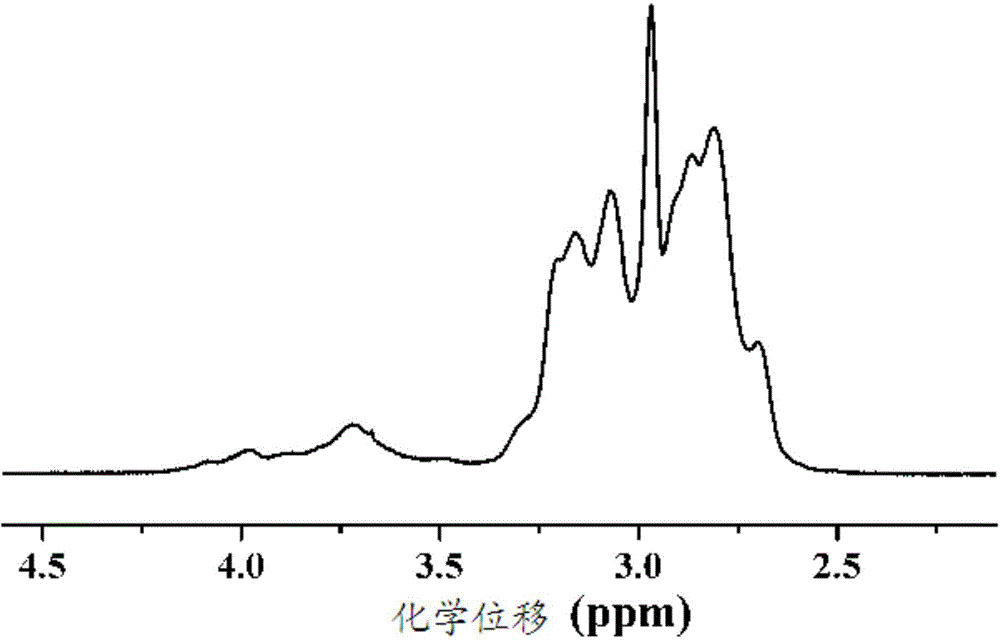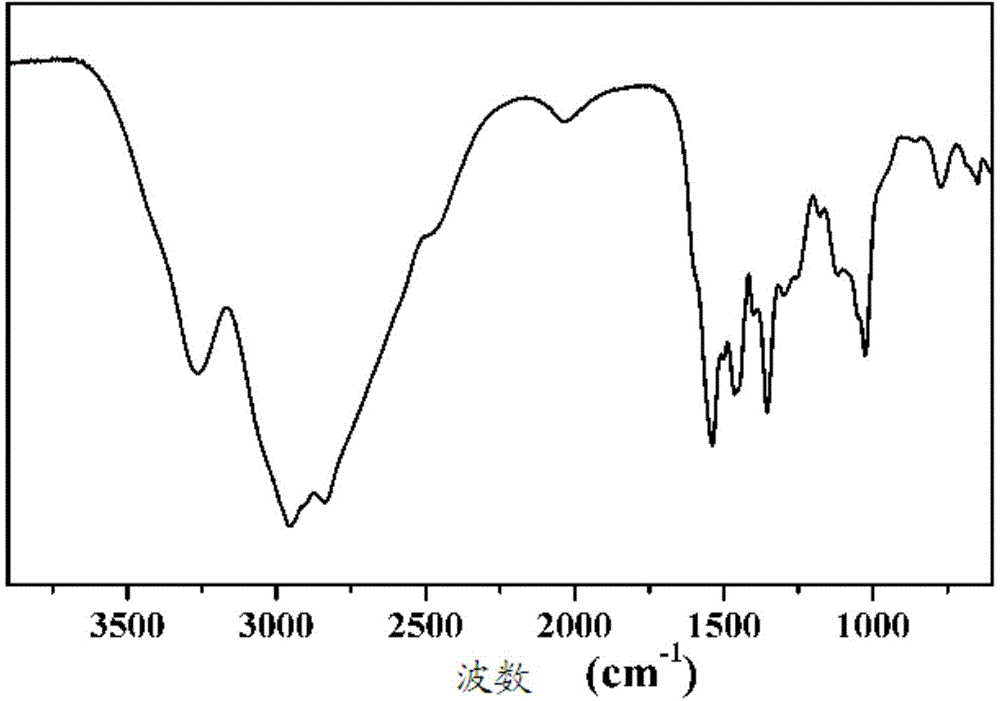Thiourea modified polyethyleneimine copolymer as well as method thereof
A polyethyleneimine copolymer and polyethyleneimine technology, applied in the field of thiourea-modified polyethyleneimine copolymer and its preparation, can solve the problems of restricting clinical application, limiting gene transfection efficiency, macrocytic toxicity, etc. problem, achieve the effect of improving transfection efficiency, reducing cytotoxicity, and good biocompatibility
- Summary
- Abstract
- Description
- Claims
- Application Information
AI Technical Summary
Problems solved by technology
Method used
Image
Examples
preparation example Construction
[0033] The invention also discloses a preparation method of a thiourea-modified polyethyleneimine copolymer, comprising the following steps:
[0034] Under anhydrous conditions, the polyethyleneimine represented by formula (V) or formula (IV) reacts with the compound represented by formula (III) in an organic solvent to obtain the compound represented by formula (I) or formula (II) Polyethyleneimine copolymer modified with thiourea;
[0035]
[0036] Among them, R is a straight chain or branched chain alkyl, cycloalkyl or aryl group, preferably a straight chain or branched chain alkyl group of C1~C10, a cycloalkyl group of C1~C10 or an aryl group of C1~C10, more preferably is methyl, n-hexyl, cyclohexyl or benzyl;
[0037] i, j, k, m, n is the degree of polymerization, i / m+j / m+k / m=1, 0<i / m<1, 0<j / m<1, 0≤k / m<1 ;i / n+j / n=1, 0<i / n<1, 0<j / n<1;
[0038] The number average molecular weight of the thiourea-modified polyethyleneimine copolymer is 423-100000, preferably 2000-60000...
Embodiment 1~7
[0047] Under anhydrous conditions, weigh 1.0 g of branched or linear polyethyleneimine (PEI) with different molecular weights into different dry reaction bottles, add 30 ml of dichloromethane, and stir until completely dissolved; Weigh 0.01% to 100% of the total molar amino groups in the amine molecule and weigh methyl isothiocyanate (as shown in Table 1), dissolve them in 20 ml of dichloromethane, and slowly dissolve methyl isothiocyanate drop by drop. The ester solution in dichloromethane was added dropwise to the polyethyleneimine solution. React at 25°C for 24 hours. After the reaction was complete, the solvent dichloromethane was removed by rotary evaporation. Then redissolve the product in water, dialyze with distilled water once to remove unreacted impurities, and freeze-dry to obtain pure methylthiourea-modified polyethyleneimine.
[0048] Using deuterated water as a solvent, the above-mentioned methylthiourea-modified polyethyleneimine is subjected to nuclear magnet...
Embodiment 8~14
[0055] Under anhydrous conditions, weigh 1.0 grams of branched or linear polyethyleneimines with different molecular weights in different dry reaction bottles, respectively add 30 ml of dichloromethane, and stir until completely dissolved; Weigh n-hexyl isothiocyanate (as shown in Table 2) from 0.01% to 100% of the total molar number of amino groups, dissolve them in 20 ml of dichloromethane, and slowly dilute the n-hexyl isothiocyanate The methyl chloride solution was added dropwise to the polyethyleneimine solution. React at 25°C for 24 hours. After the reaction was complete, the solvent dichloromethane was removed by rotary evaporation. Then redissolve the product in water, dialyze with distilled water once to remove unreacted impurities, and freeze-dry to obtain pure polyethyleneimine modified by n-hexylthiourea.
[0056] NMR analysis was performed on the n-hexylthiourea-modified polyethyleneimine, and its number-average molecular weight and average thiourea molar modifi...
PUM
 Login to View More
Login to View More Abstract
Description
Claims
Application Information
 Login to View More
Login to View More - R&D
- Intellectual Property
- Life Sciences
- Materials
- Tech Scout
- Unparalleled Data Quality
- Higher Quality Content
- 60% Fewer Hallucinations
Browse by: Latest US Patents, China's latest patents, Technical Efficacy Thesaurus, Application Domain, Technology Topic, Popular Technical Reports.
© 2025 PatSnap. All rights reserved.Legal|Privacy policy|Modern Slavery Act Transparency Statement|Sitemap|About US| Contact US: help@patsnap.com



